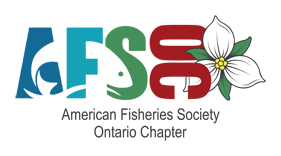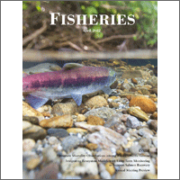News – Sander is the Valid Generic Name for Walleye, Sauger, and European Pikeperches
Sander Oken 1817 (Percidae) is the Valid Generic Name for Walleye, Sauger, and European Pikeperches: A Response to Bruner (2021)
AUTHORS: Christopher Scharpf, The ETYFish Project, 4102 Westview Road, Baltimore, MD 21218, USA. chris@etyfish.org; Ronald Fricke, Staatliches Museum für Naturkunde, Stuttgart, Germany. ronald.fricke@smns-bw.de
CITATION: Scharpf C. and R. Fricke. 2021. Sander Oken 1817 (Percidae) is the Valid Generic Name for Walleye, Sauger, and European Pikeperches: A Response to Bruner (2021). Fisheries 47(4)151:153 https://doi.org/10.1002/fsh.10686
The correct generic name for Walleye, Sauger, and three species of Eurasian pikeperch has been a point of contention since 1903. Rafinesque proposed Stizostedion (as a subgenus of Perca Linnaeus 1758) in 1820, a name used by most American ichthyologists throughout the 19th century. Gill (1903) revealed that Sander Oken 1817 (type species Perca lucioperca) predates Stizostedion and should replace it. Gill’s paper was either ignored or dismissed (e.g., Collette 1963) until Bogutskaya and Naseka (1997) and Kottelat (1997) resurrected Sander. The Committee on Names of Fishes, a joint committee of the American Fisheries Society and American Society of Ichthyologists and Herpetologists, examined the issue and recommended, on the strength of Gill’s finding, that Sander should replace Stizostedion (Nelson et al. 2003). This change, a significant one considering the commercial importance of Walleye and Sauger, was formally adopted in the sixth (Nelson et al. 2004) and seventh (Page et al. 2013) editions of Common and Scientific Names of Fishes from the United States, Canada, and Mexico. In 2011, Bruner rejected Sander in favor of Stizostedion on the grounds that Gill incorrectly treated Oken’s use of the Latvian common name Sander for Perca lucioperca as a properly erected new generic name for the species. Bruner (2021) expanded on this argument, adding that Oken did not latinize Sander (e.g., Sandrus) nor differentiate the genus and designate a type species, all required actions, Bruner implies, for making a genus-level name available.
Our reading of Oken 1817 indicates that Sander is an acceptably formed and published scientific name consistent with standards predating the International Commission of Zoological Nomenclature (ICZN). Bruner’s arguments suffer in that they apply modern-day nomenclatural guidelines to a taxon proposed in the early days of binominal zoological nomenclature, decades before the publication of the first edition of the ICZN code in 1905.
FULL TEXT – Scharpf and Fricke



